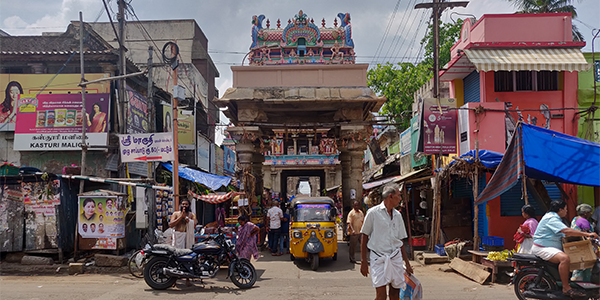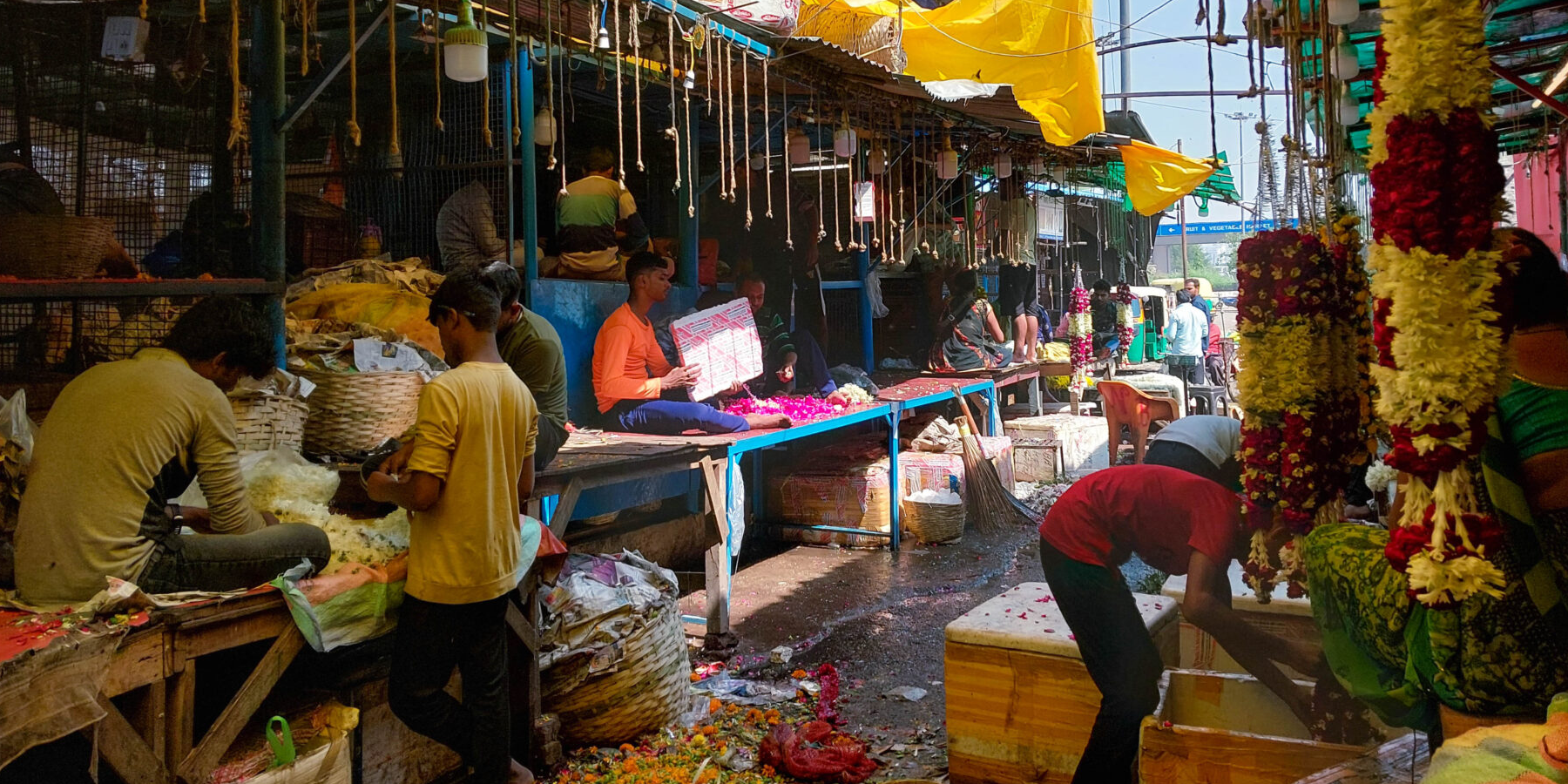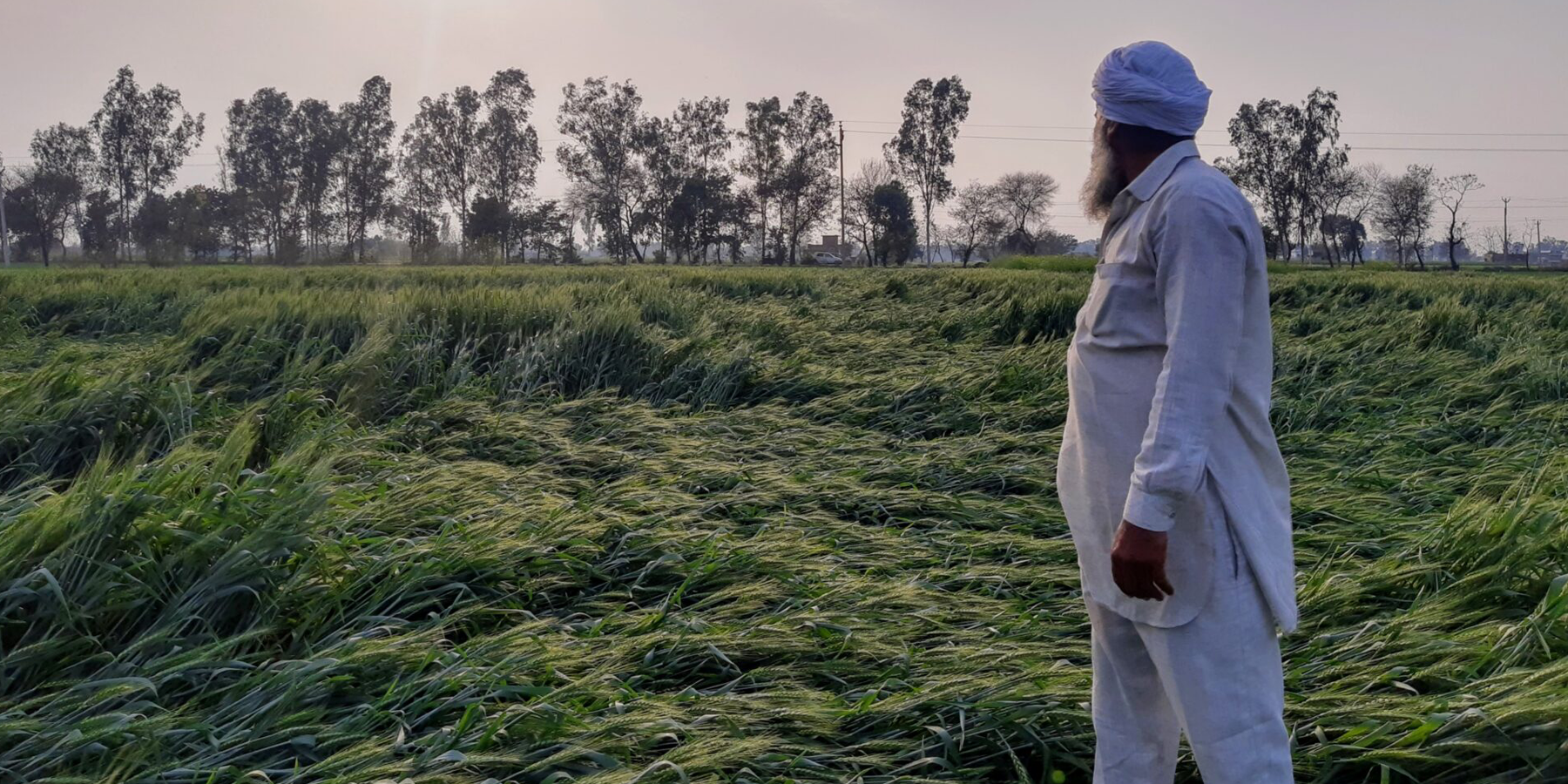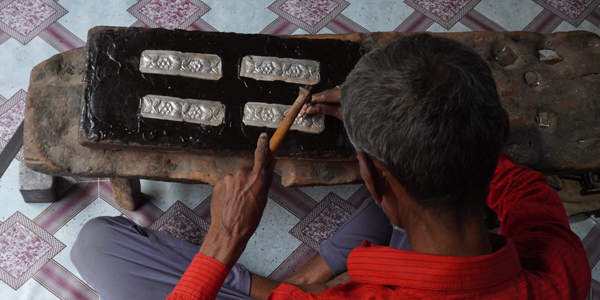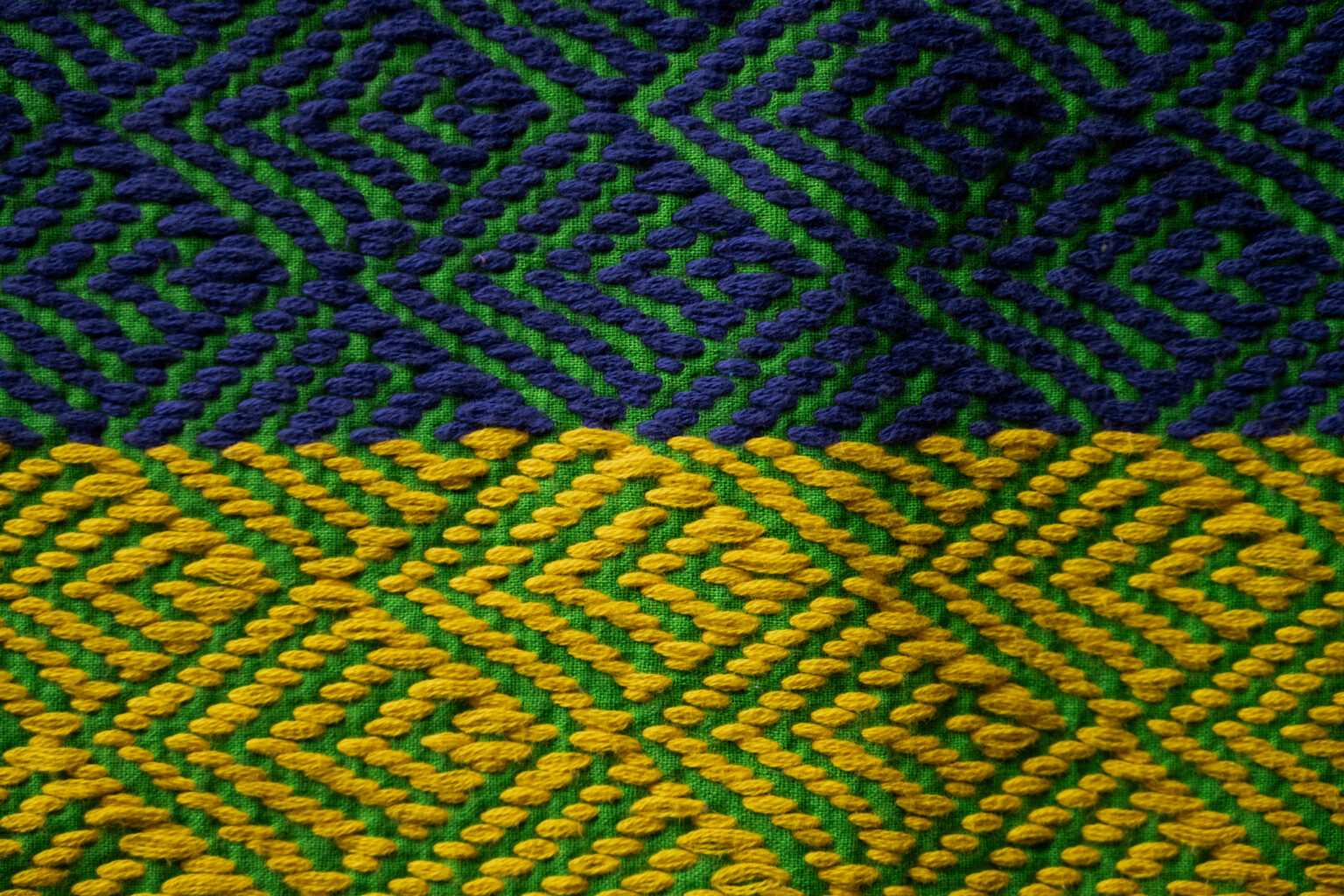
Figure 1. Pan Phool Kheta pattern.
Kheta embroidery is a kind of quilting that involves stitching layers of fabric together, and resembles a weave. The craft is exclusively practised by the women of the Shershabadi community of Kishanganj in Bihar, which has led to a unique bond among the womenfolk.
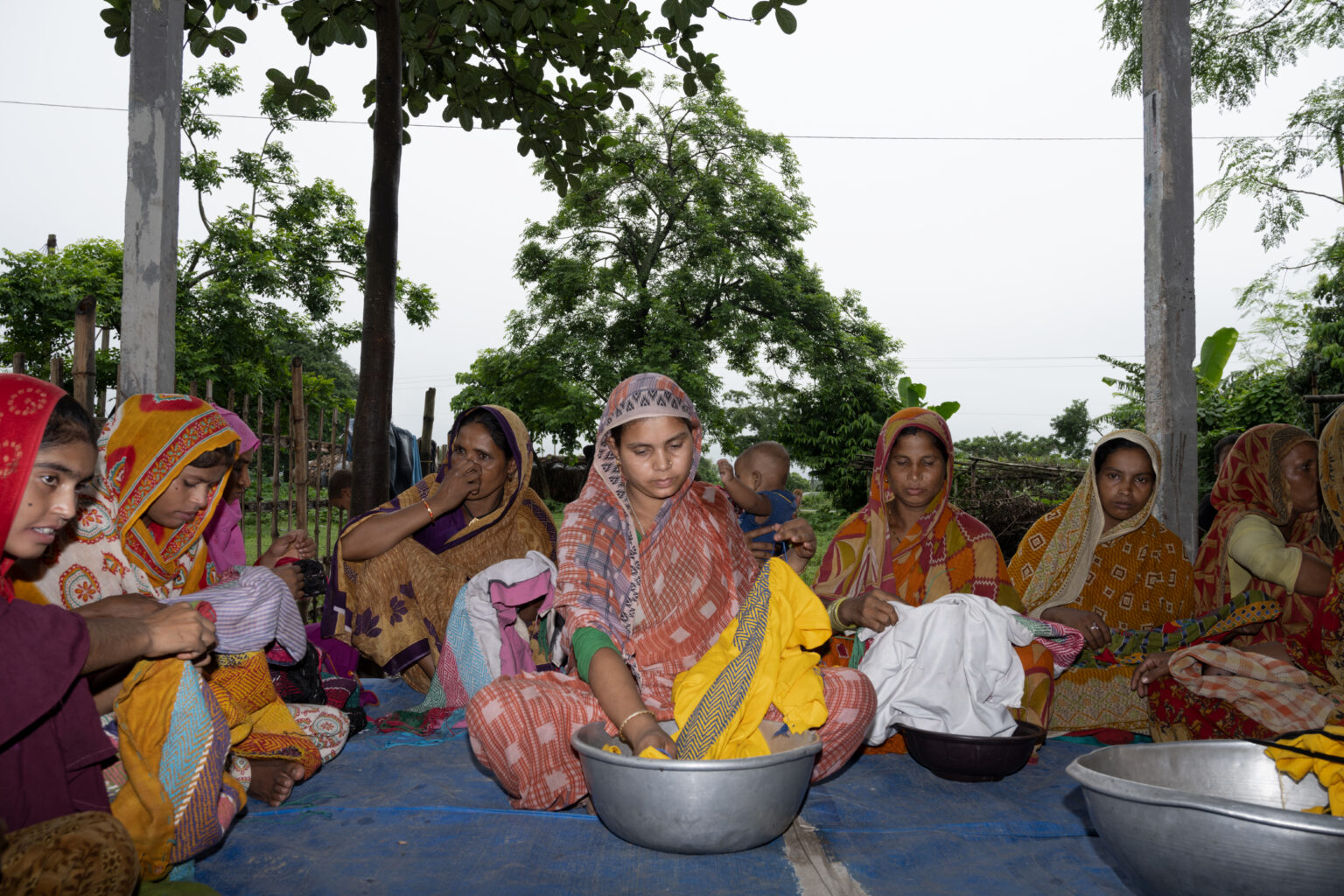
Figure 2. A group of women sit together to do Kheta embroidery in Arrabari village.
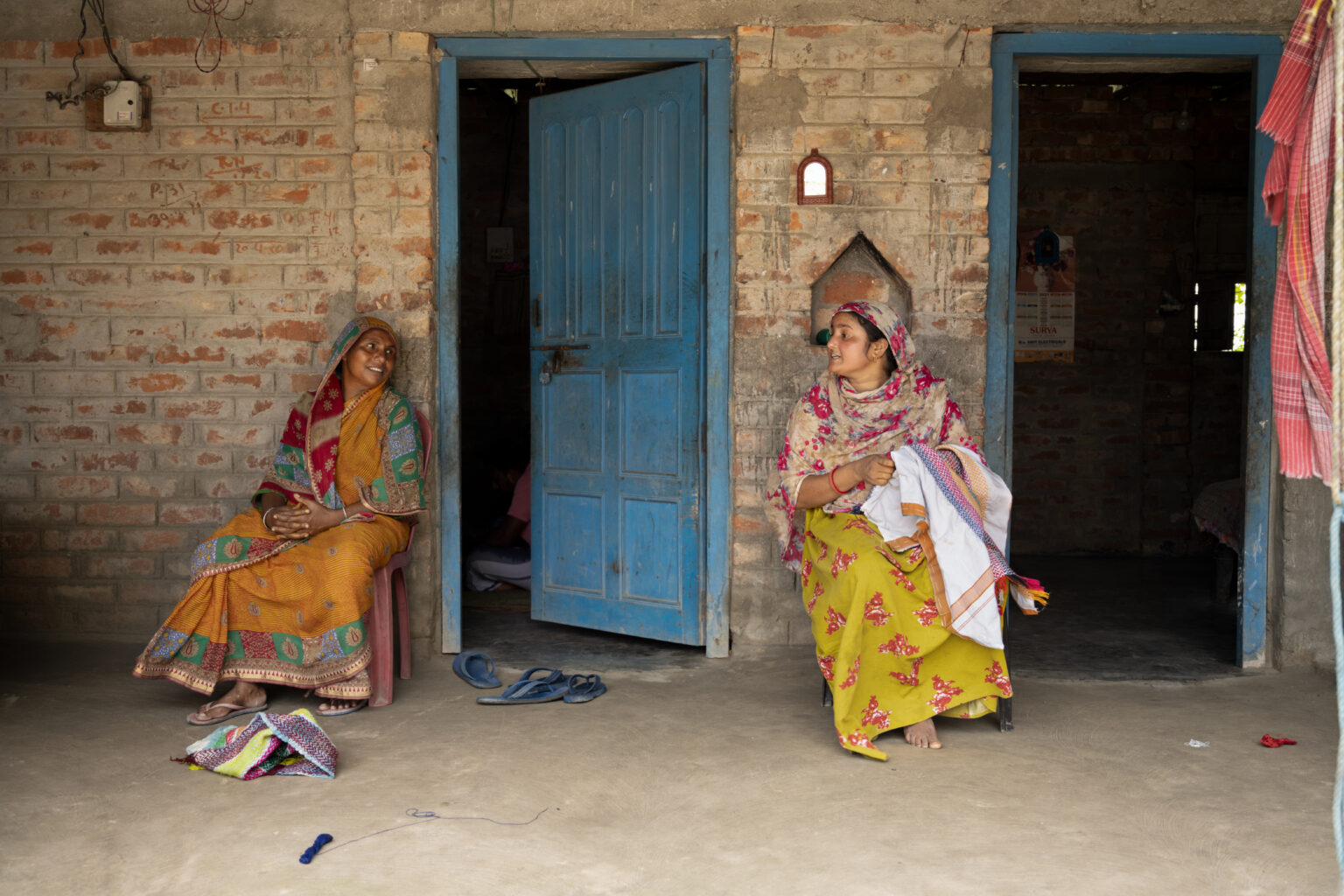
The term Shershabadi (original Shershabadia) has direct reference to the community’s place of origin, i.e., the former Jawar-e-Sarsabad, which comprised parts of Murshidabad, Malda in West Bengal, and Sahibganj district in Jharkhand.
Owing to various social, political, and environmental reasons, they migrated from their place of origin, and are now settled in Kishanganj and its neighbouring districts, in Bihar. Originally a community of settled agriculturists, they slowly dispersed along the river banks and tried to make a living through cultivation. However, being a migrant community, they mostly ended up cultivating low-lying lands (unlike the Surjapuri, who are the primary land owners).
Since Bihar is among India’s most flood-prone states, low-lying areas are easily affected, resulting in extensive damage to the crops. Soil erosion caused by the floods further leads to reduced productivity, posing a threat to their livelihood.
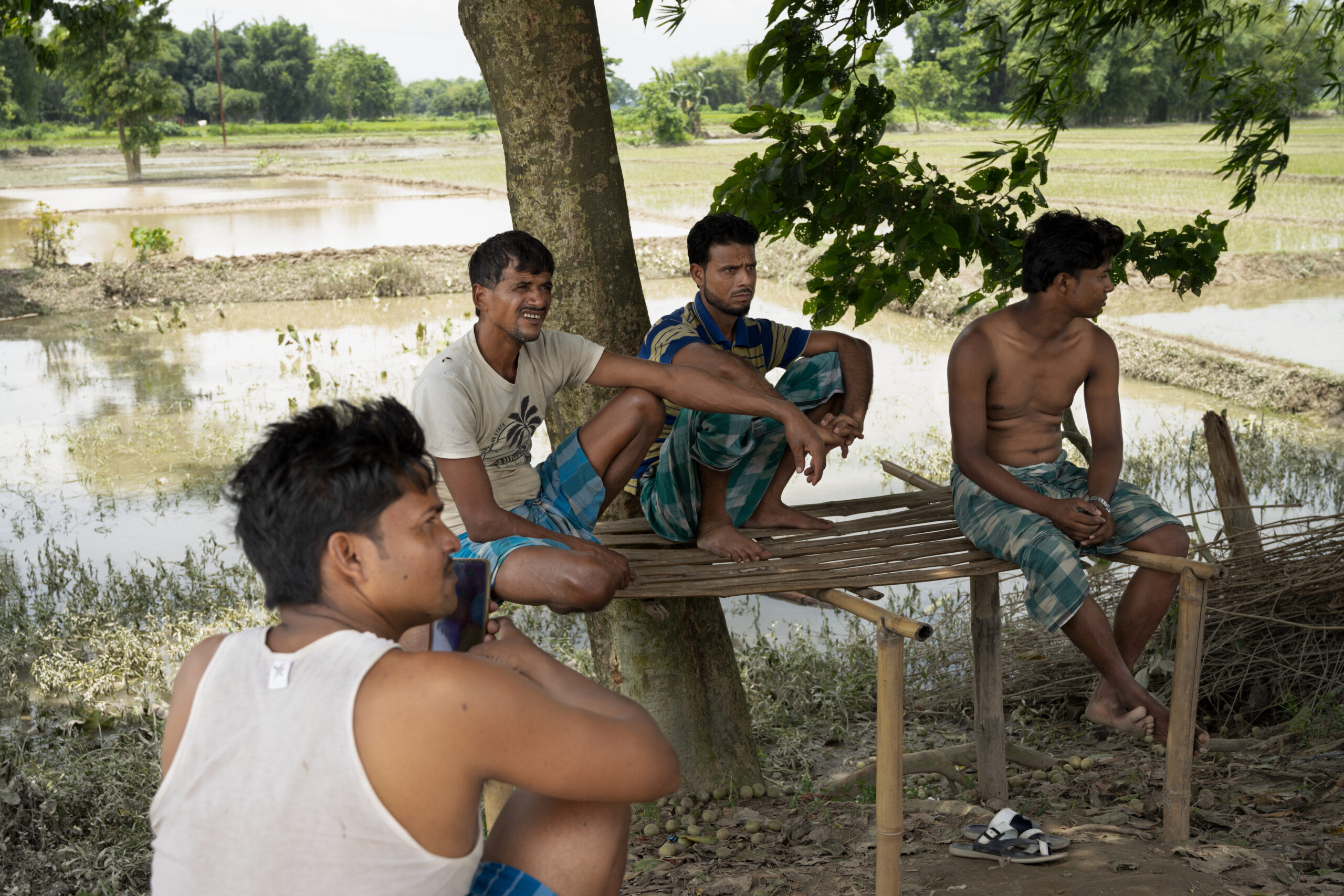
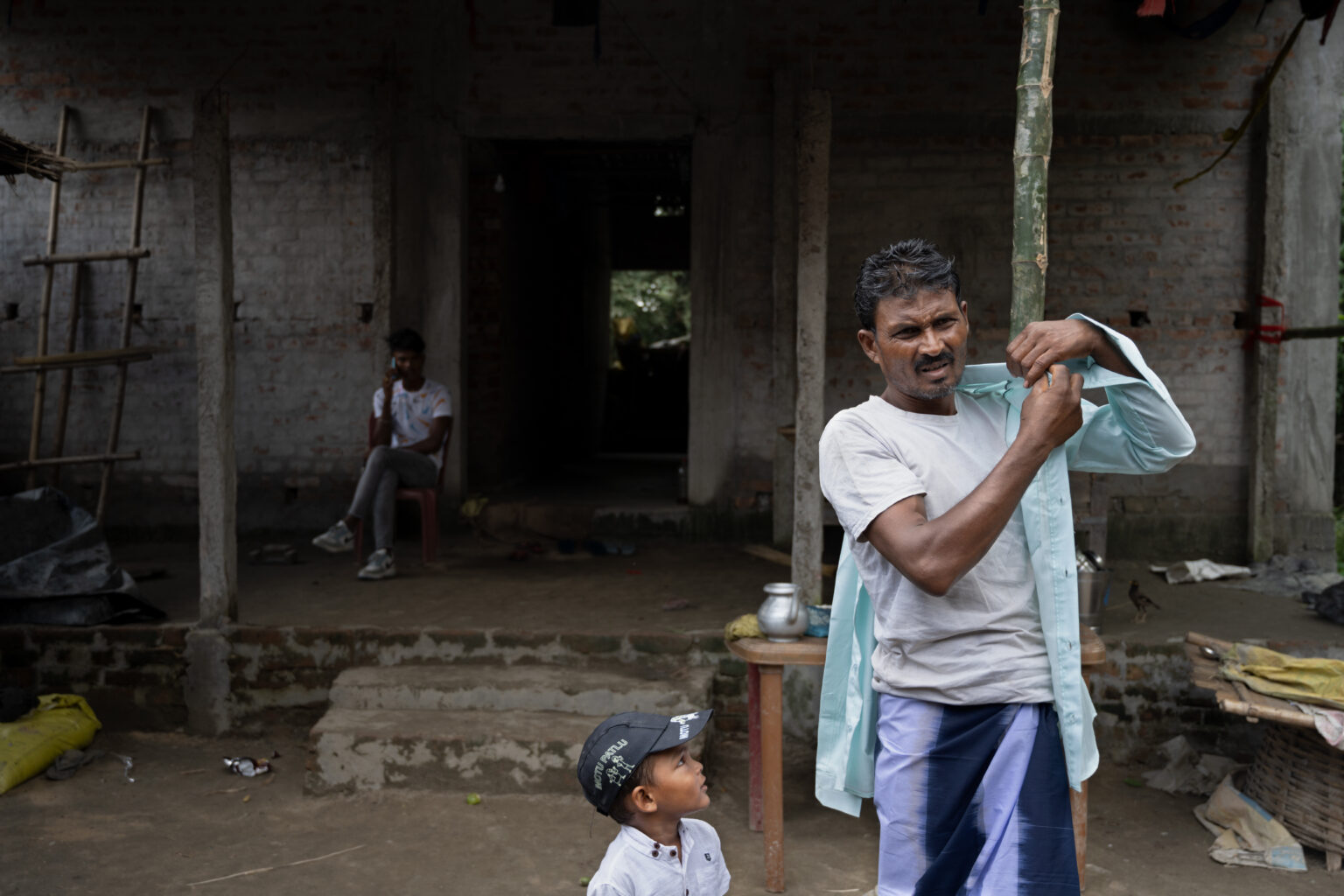
Figures 4(a) and 4(b). Men, who have mostly migrated to other states in search of work, come back during the sowing season.
Thus, unable to make ends meet solely through agriculture, the men migrated to other states in search of better work opportunities. The women, who are mostly responsible for looking after the household, took to bidi-making as a way to supplement their income.
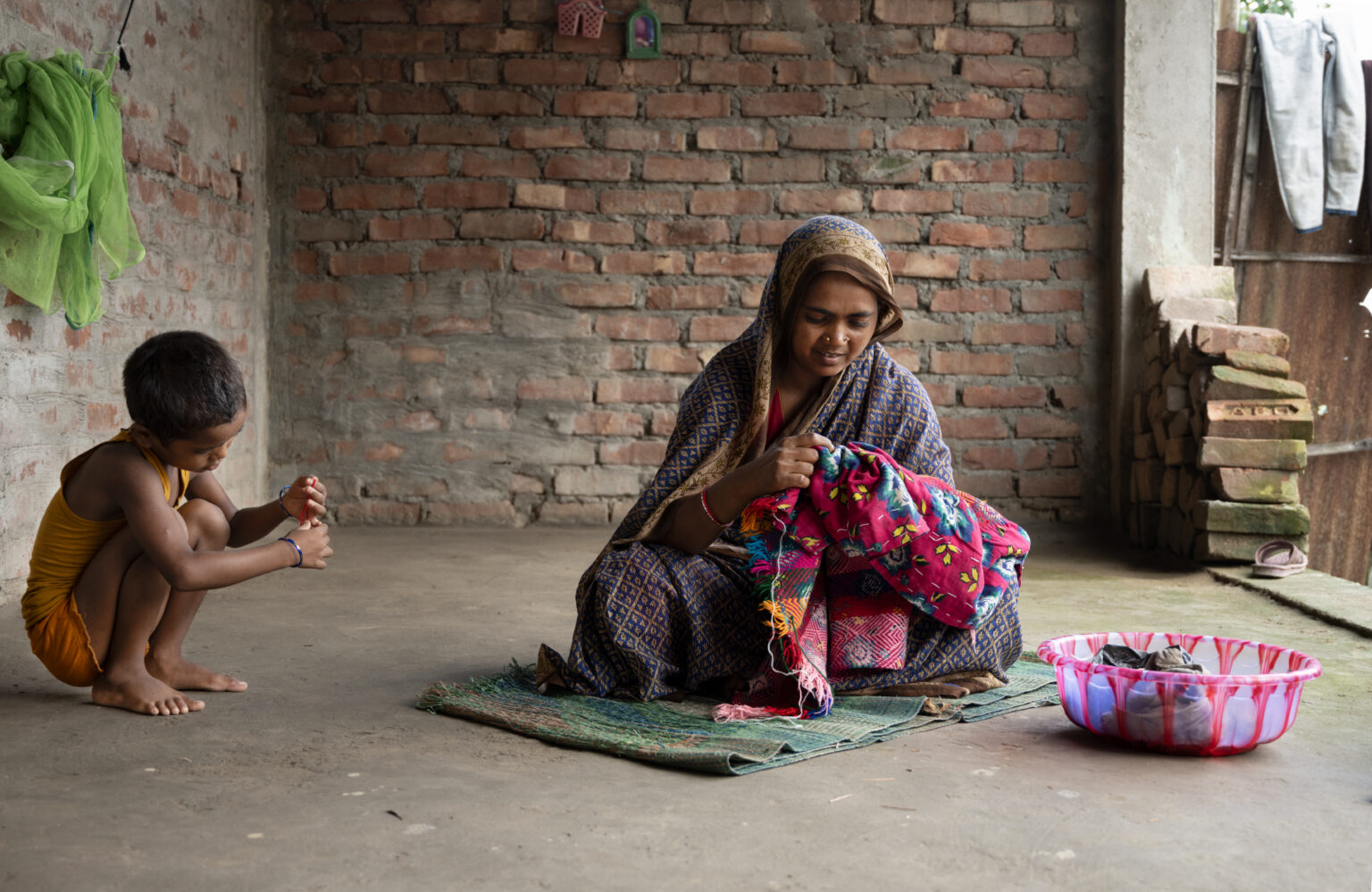
Figure 5. Shehrabano uses her free time to work on embroidery. Her husband works as a migrant labourer.
Apart from the possible health hazards, bidi-making requires longer working hours with less pay, thus, adding to the physical and mental strain of women. The middlemen responsible for supplying the raw materials (tobacco leaves) benefit a great deal from their cheap labour, while the women can only manage to get a meagre amount, earning on average 1NR 100 per 1000 bidis rolled, despite working several hours. There is no guarantee of minimum pay or a fixed number of working hours.
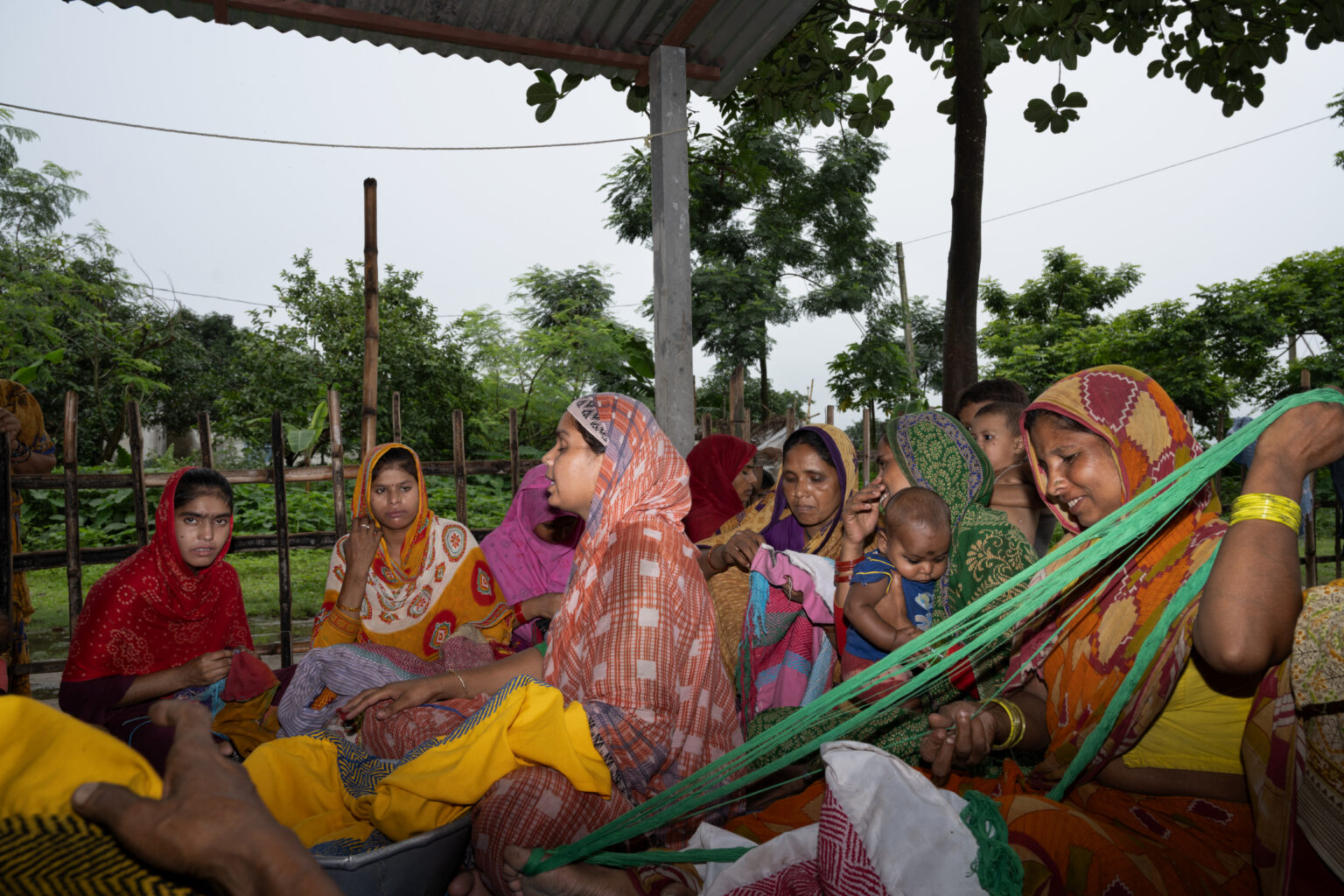
Figure 6. Women from Arrabari village sit together to work on the embroidery.
However, recently, with the intervention of NGOs like Azad India Foundation and Zameen Astar Foundation, the Shershabadi women have found a way to monetise their age-old craft of Kheta embroidery. The embroidery skills, which are more than 500 years old, have been passed down from mothers to daughters, generation after generation.
Figure 7. An older woman guides Ashiranissa (left), Noorjahan Khatoon (second from left), and Shehla Khatoon (right) as they sit together to embroider

Figure 8. A collage of the artisan’s hands working on the craft.
Apart from the complex patterns, the attention to detail, and the emotive use of colour, each Kheta quilt is the signature style of one person, thus, providing the Shershabadi women with a glimpse of individualistic artistic expression. In other words, Kheta embroidery has become an identity for the Shershabadi women, so much so that they are interchangeably known by each other.
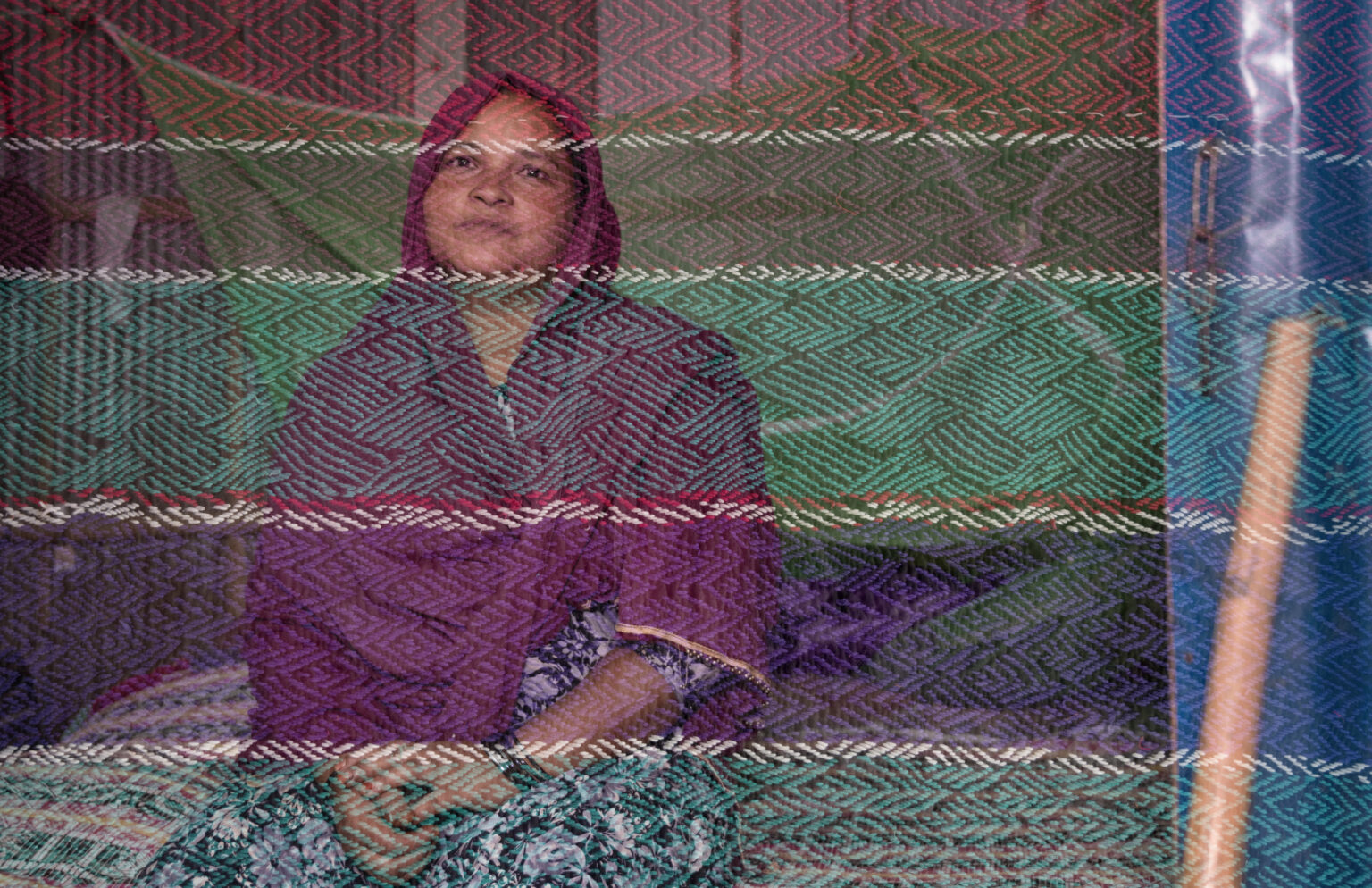
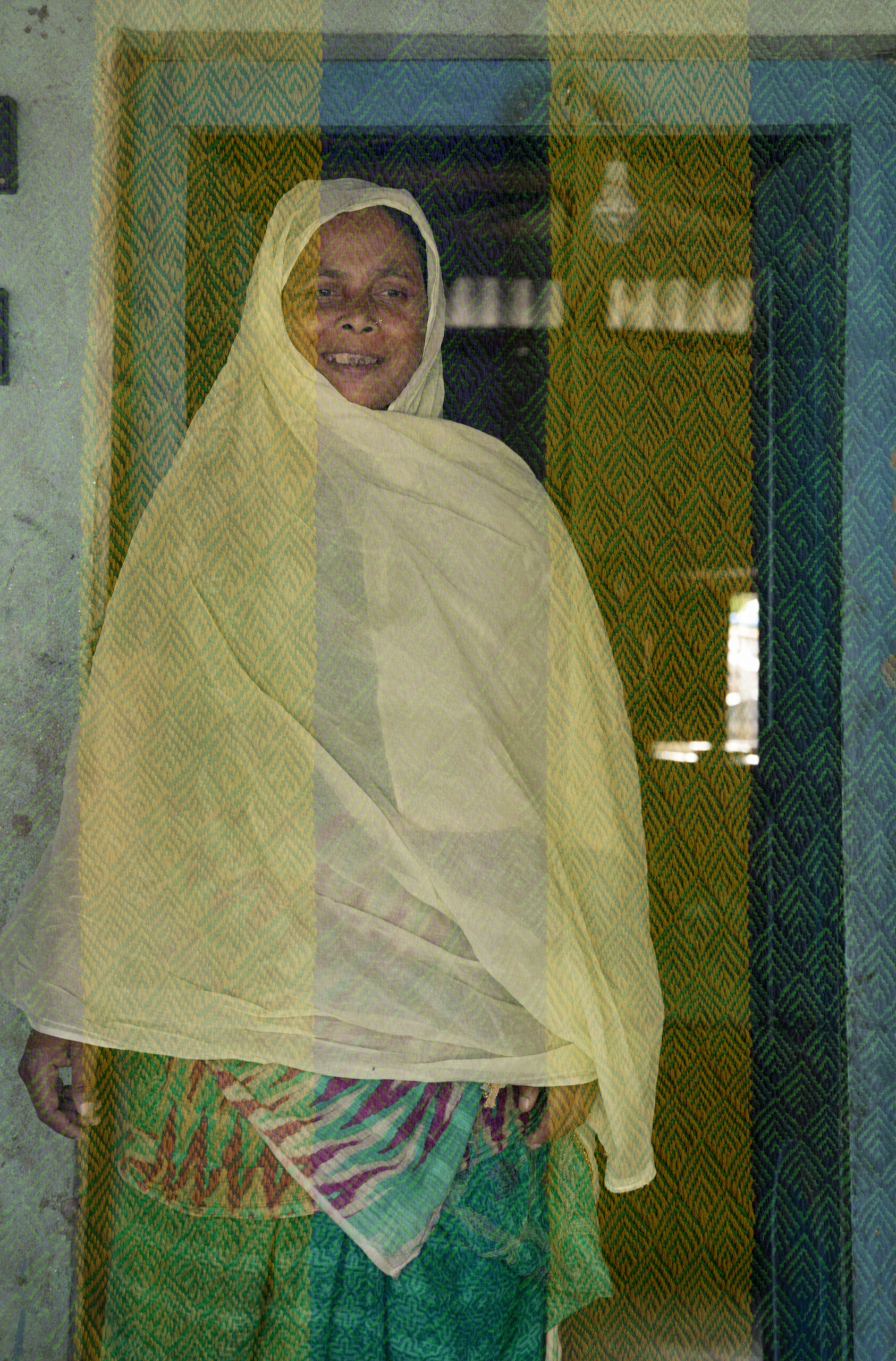
Figure 9 (Left). A portrait of Saleha Khatoon is overlaid with a Biscuit Phool pattern. Figure 10 (Right). A portrait of Tajgera Khatoon is overlaid with the Pan Phool pattern.
Moreover, Kheta is a form of embroidery that is replete with symbolism, often making references to everyday objects, nature, and surroundings, thus speaking of a culture and place.
The influences for the embroidery are their immediate surroundings, mostly drawing inspiration from the water bodies and the land there. It is an interplay of natural elements with people, thus giving expression to the everyday intricacies. The recurring motifs that appear include the ripples of the river, the movement of the earthworms, and the textures of the pan patta, among others. Along with the natural elements, a large part of the embroidery is also influenced by the religion and culture of the Shershabadi community.
Figure 11. Nasma Khatoon is doing Kheta embroidery in her home in Bambadi village.
The ability of the medium to be simultaneously personal and speak to broader issues at large adds to its unique value. More than just a craft, it has served as a tool for artistic expression, a medium to demonstrate a woman’s domestic sophistication, a passing down of tradition, and most importantly, a means to empower themselves economically.
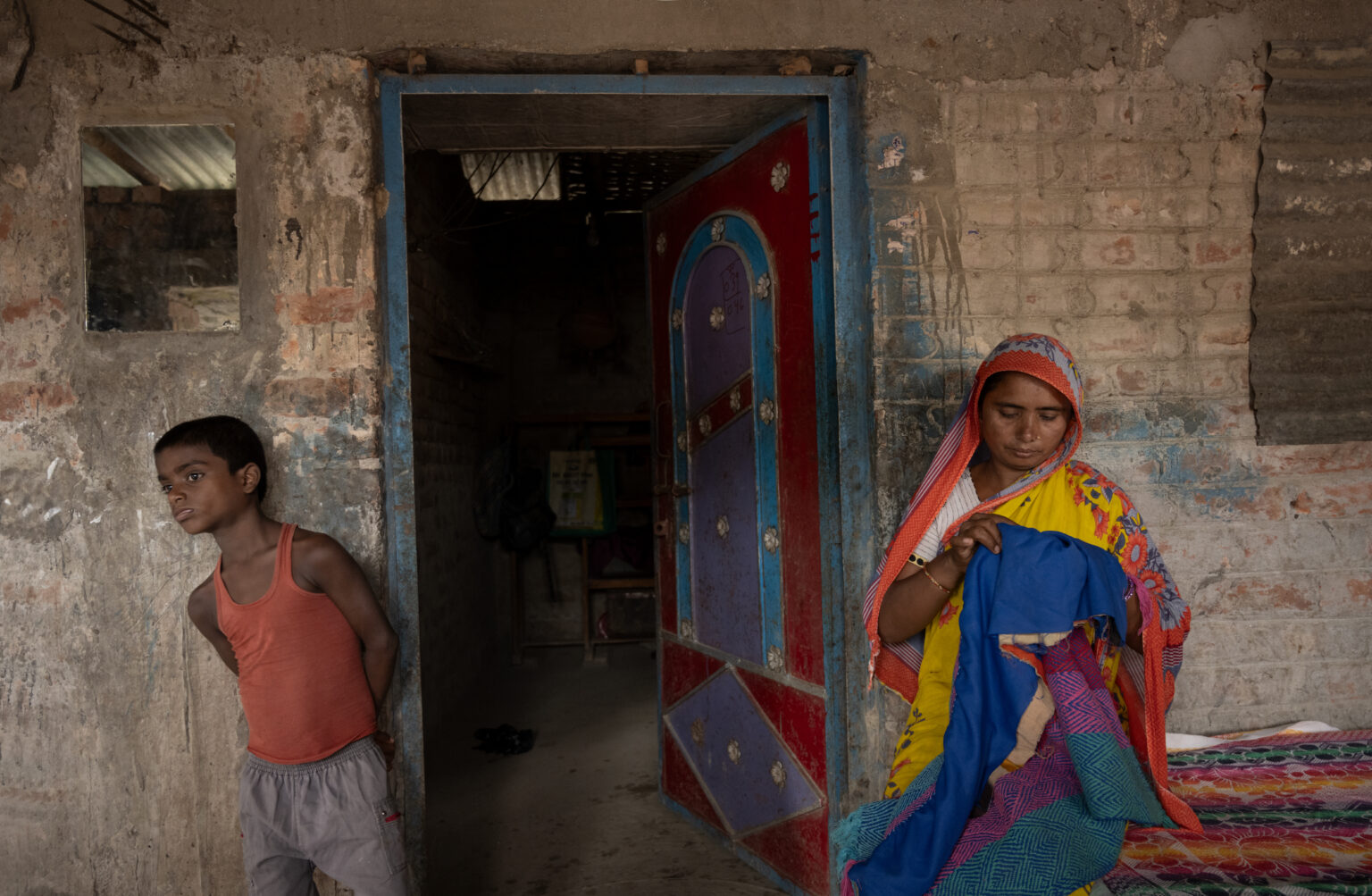
Figure 12. Marzina Khatoon (right) doing embroidery in her home.
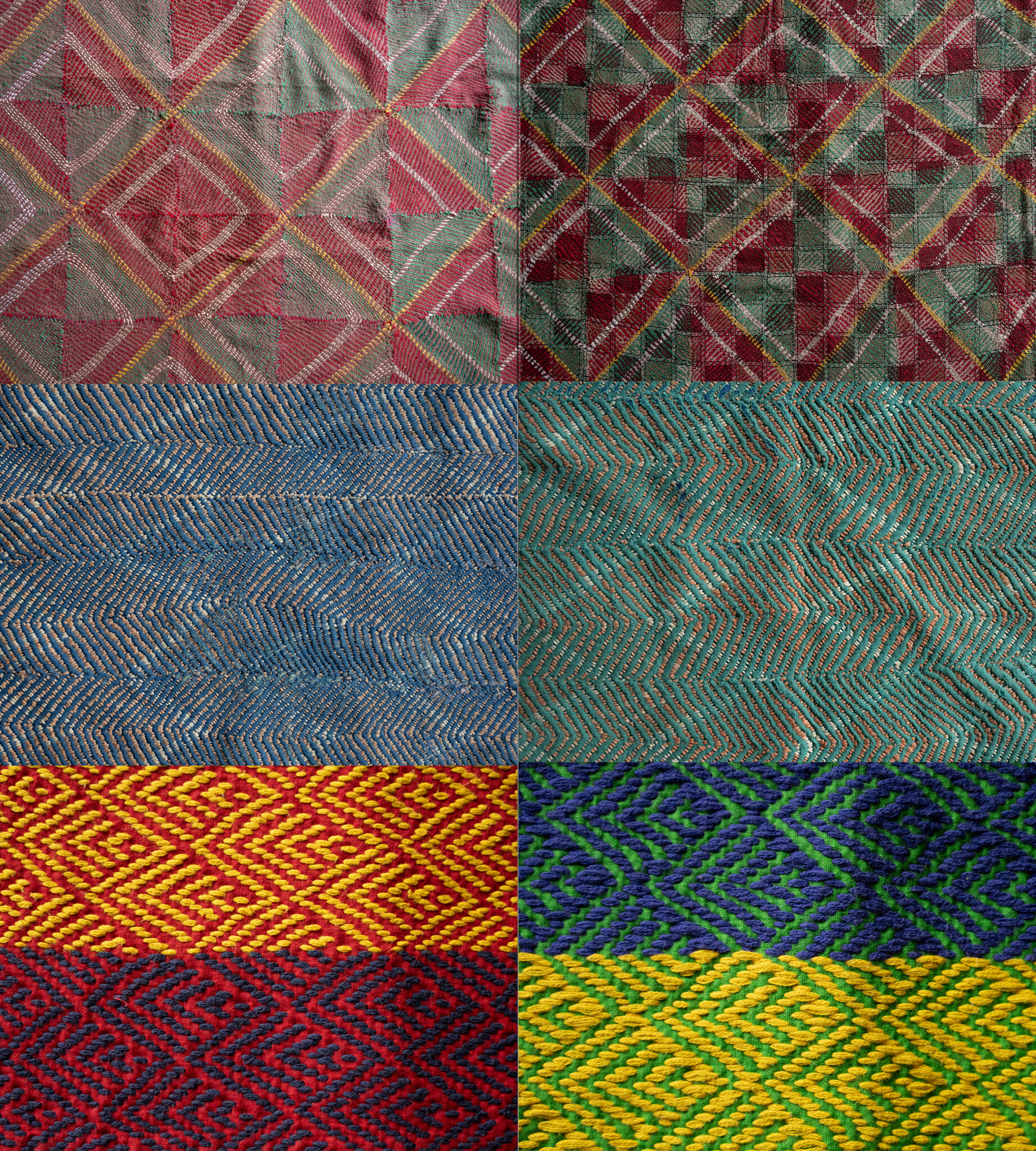
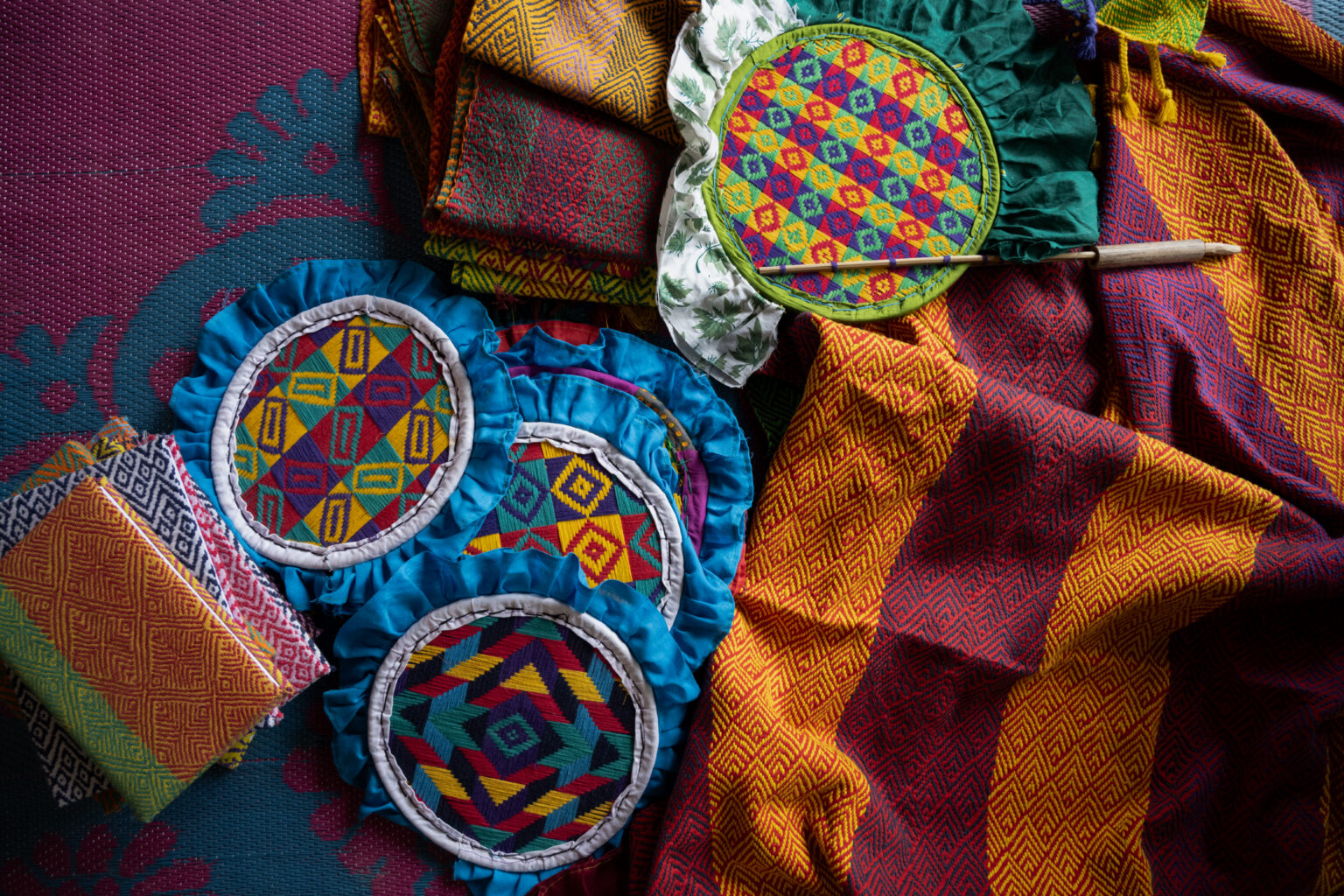
Figure 14. Images of products featuring Kheta embroidery. Some of the products shown here include notebooks, hand fans, quilts, and table runners.
Some of the women who were formerly engaged in bidi-making have switched to embroidery as a means of earning some cash. A few of them hold jobs in schools and other places, while also practising Kheta. Some of them use the craft for personal use only. Nevertheless, they are committed to preserving the continuity of the craft.
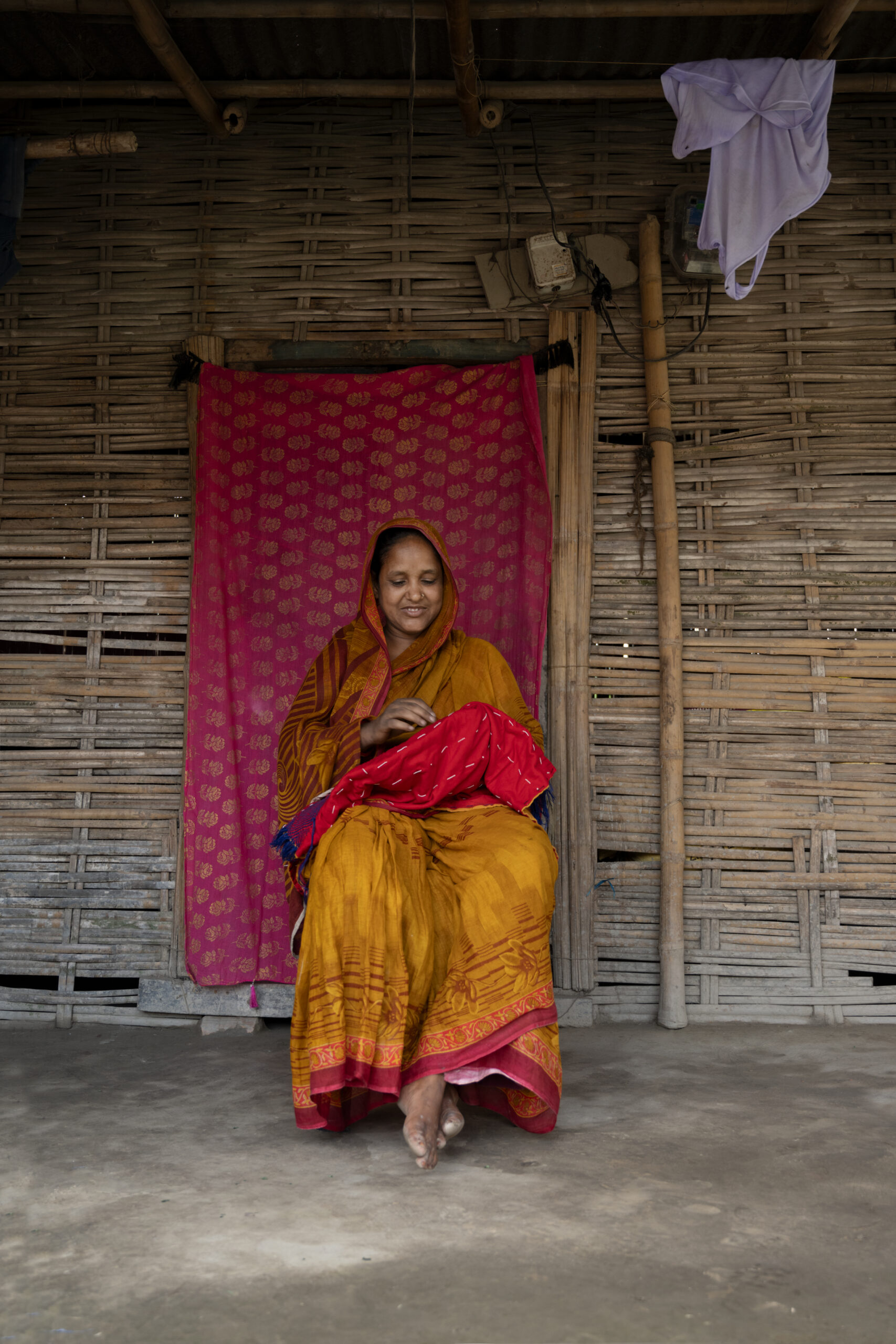
Figure 15. Mukhtara Khatoon, in her home, making Kheta embroidery in Chakchaki village. She also works in a nearby school.
Prior to recent efforts to commercialise the craft and use it to gain economic independence, Kheta was mostly practised by the Shershabadi women for their own use. Some of the Kheta products include quilts for newborns, decorative pieces, or gift items for newlyweds. The commercialisation effort has introduced an array of new products, such as notebooks, tablecloths, hand fans, scarves, table runners, bedcovers, etc., among others.
The women artisans can earn anything between INR 10000 and 30000 per year. While the women mostly embroider in their spare time, blurring the boundary between labour and leisure, it is still a tedious process and requires a lot of time and patience. Hence, the artisans must be offered a fair wage based on the number of hours spent in embroidery as well as the quality of the finished product.
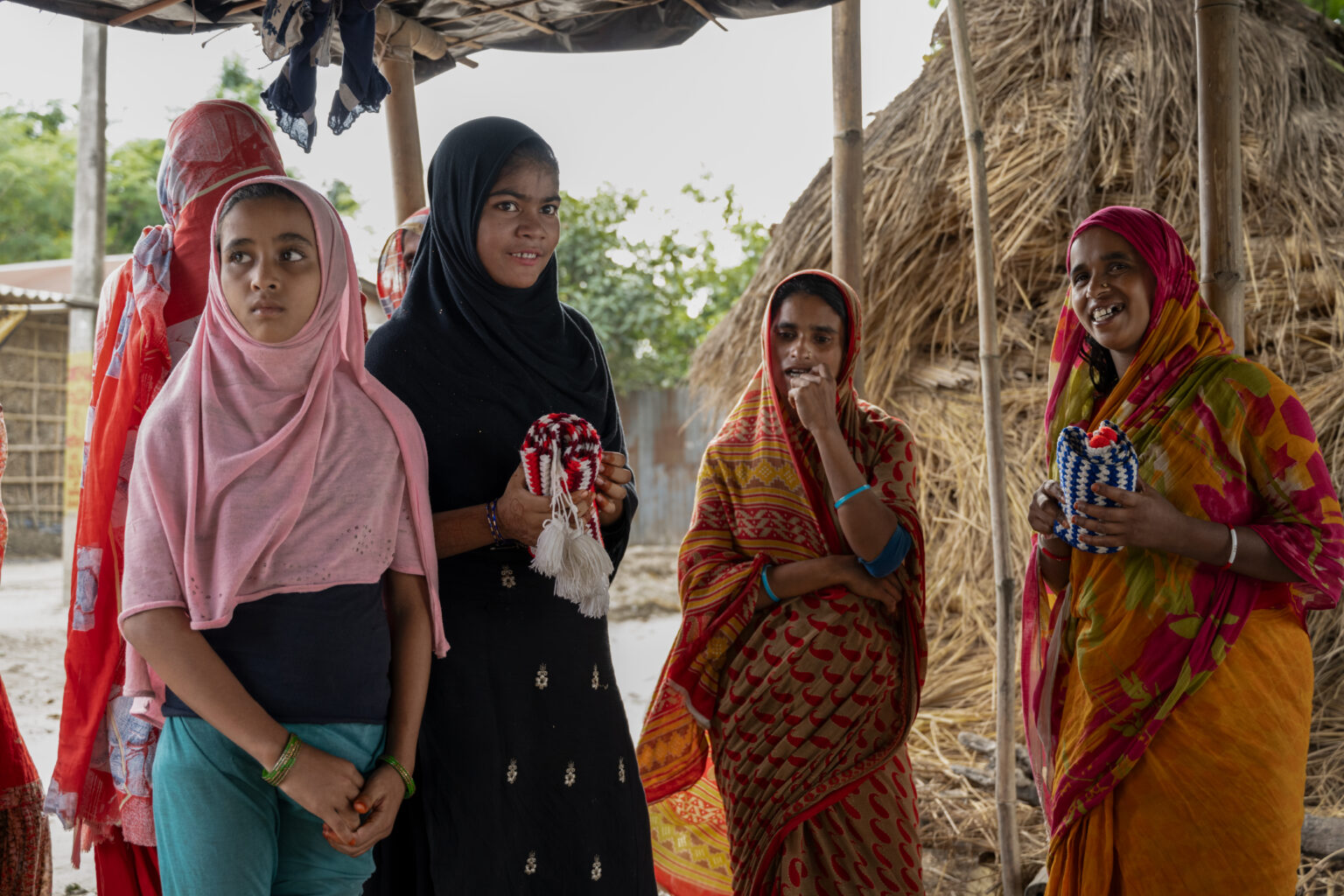
Figure 16. Women and girls in Behra Kolha village holding a muffler featuring Kheta embroidery.
Based on the age-old tradition of reuse and repurposing, Kheta was mostly done using old and spare clothes. However, the recent commercialisation effort means sourcing raw materials and providing some training to ensure the quality of the Kheta. Since the sourcing and procuring of raw materials is difficult, due to the rising cost and unavailability of the materials used, the government must also ensure and aid their economic independence.
Given that crafts are lived experiences and are often transferred from one generation to another, orally, the lack of formal training centres aimed at upskilling of Kheta embroidery, low female literacy migration due to marriage, better work opportunities, or climate change, are some of the factors that can hinder the knowledge transfer. The government can provide aid by implementing proper river management to help the residents cope with floods and other climate-induced disasters, starting literacy programmes aimed at educating children and young girls, and creating job opportunities to stop migration.


